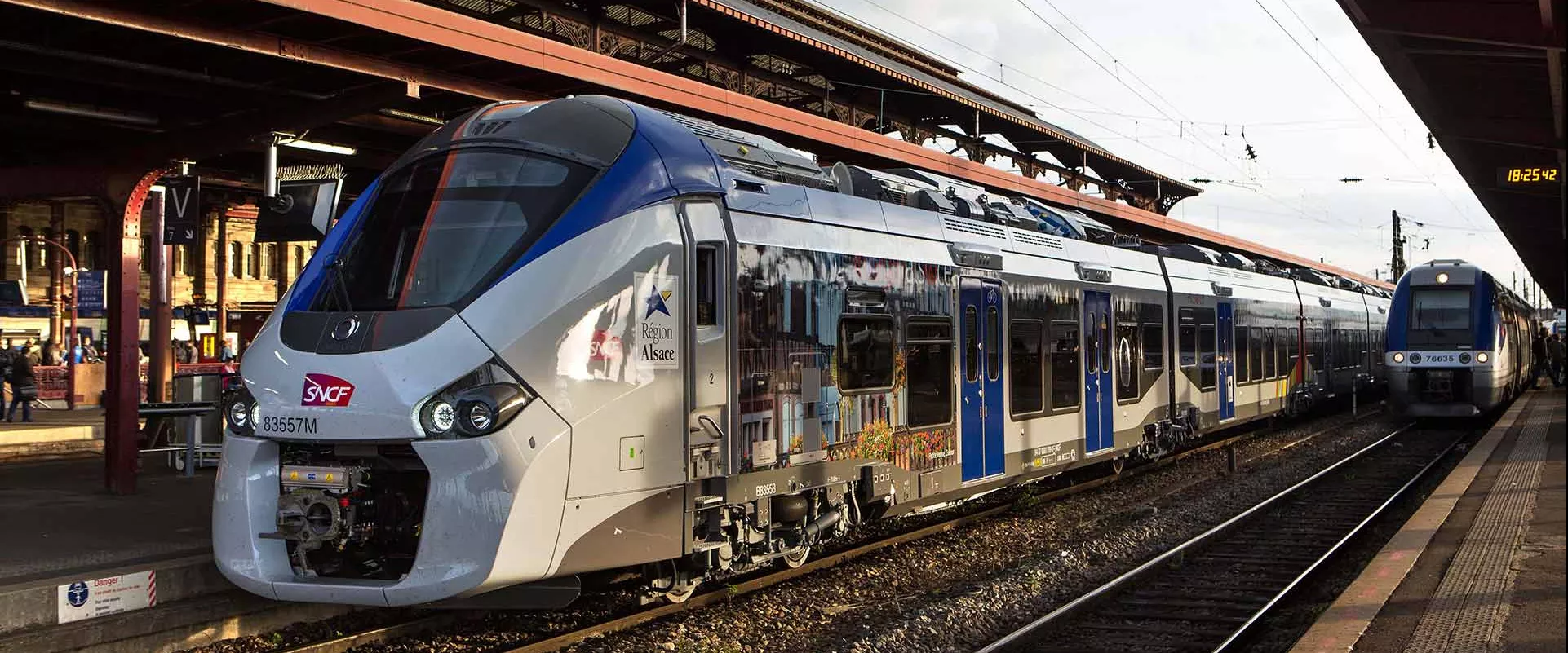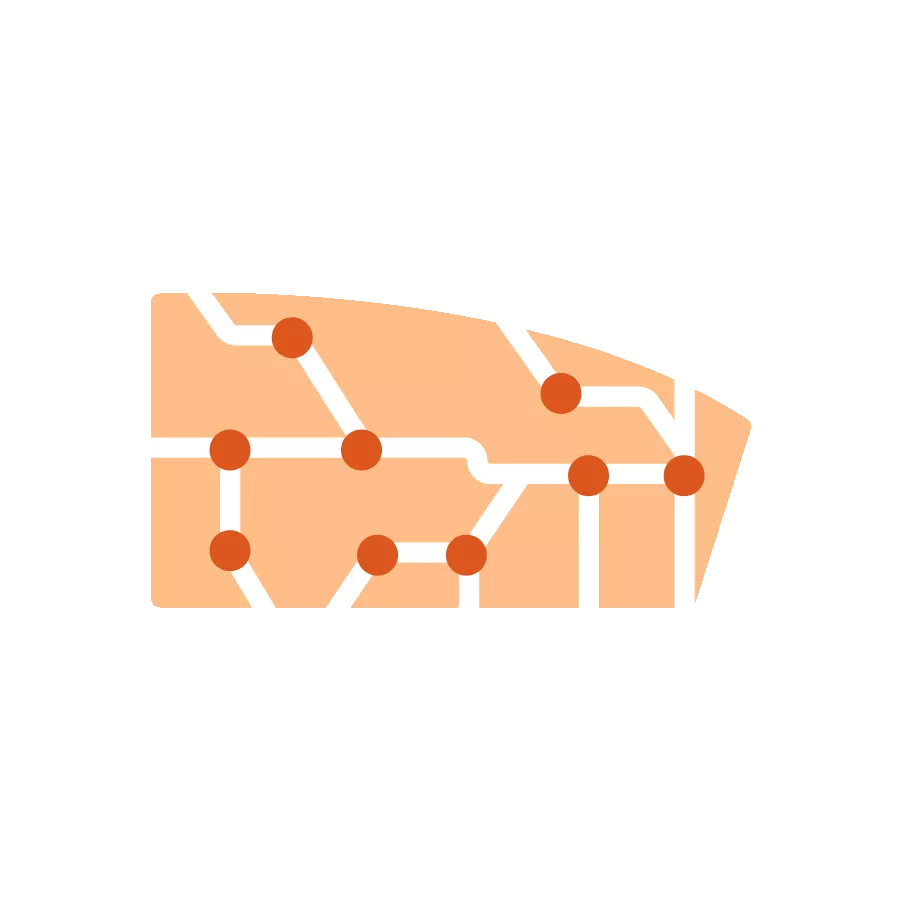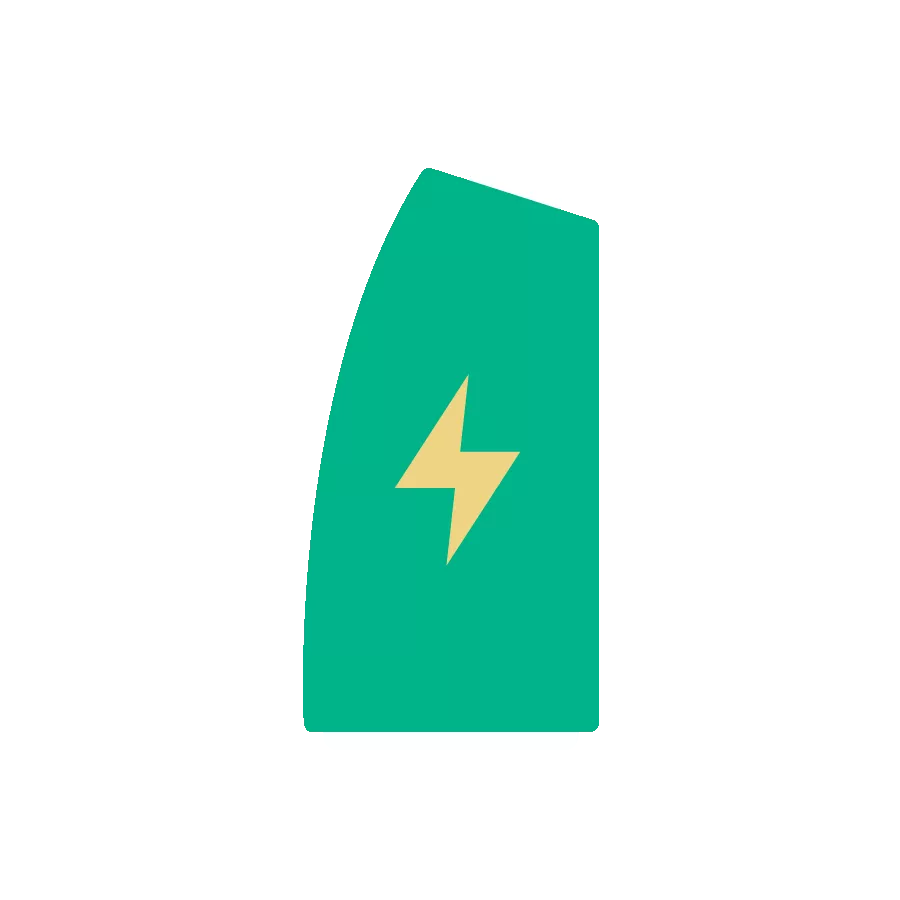
A global leader in predictive maintenance
Predictive maintenance uses sensors and 4G/5G connectivity to collect data on our trains and assess them in real time. The benefit? We fix technical problems before they happen, so passengers and freight get there on time.
SNCF is a global leader in predictive maintenance for rail. We can analyse more than 8,000 variables per train—including 2,000 in real time—and monitor over 1,100 trains simultaneously. Find out how it works in this interview with Cyril Verdun, Director of Maintenance Engineering, Rolling Stock Division.

We can analyse
8,000
variables for a single train

Including
2,000
in real time

More than
1,100
trains already have SIM cards or IoT1 sensors installed by SNCF Voyageurs
What is predictive maintenance?
Cyril Verdun: With predictive maintenance, we receive a steady stream of data from our trains, interpret it with algorithms we’ve developed at our own expense, and use this information to reduce the need for inspections. As a result, we can eliminate routine preventive maintenance—inspecting trains, checking a level, a value, a condition—which probably accounts for around 90% of maintenance work. With continuous live data, we can skip all the checking and focus on the remaining 10%.
What makes it “predictive”?
CV: In my opinion, “predictive maintenance” is a misnomer. It would be better to say “analytic maintenance” or “data maintenance”. Instead of treating trains like cars, with service carried out every X km, we can eliminate periodic inspections altogether. Not only can we predict and anticipate failures, we can tailor our maintenance schedule to the actual condition of each piece of equipment.
How much progress have you made?
CV: Right now we’re making progress on 2 different groups of trains. The first group has no built-in predictive maintenance equipment. On these older trains, we install IoT1 devices—connected sensors that let us collect the data we need for remote diagnostics. But trains in the second group already have a built-in IT network, so we simply install SNCF SIM cards to transmit data for predictive maintenance.

Our diagnostics are
95%
accurate in predicting technical problems

We track
2,500
trains with remote diagnostics network-wide

We’ve eliminated
50%
of technical problems with predictive maintenance
So there are two levels of predictive maintenance?
CV: Exactly. The first is condition-based maintenance (CBM), which is extremely advanced. It relays innumerable data points covering all of the train’s variables. At the second level, we use remote diagnostics to collect targeted data, which is often binary. This type of maintenance gives us only 1/1000 of the information we get from network data, so it’s much less precise. SNCF currently has 1,100 CBM-enabled trainsets, plus 2,500 that are equipped for remote diagnostics. And these figures don’t include the next-generation trains—RER NG, TGV M and Oxygène—that will soon enter service.
What components do you track?
CV: We analyse data from doors, mobile steps, air conditioning and heating, toilets, compressors, batteries, lighting, engines, onboard passenger information systems, video surveillance systems and brakes.
What’s the benefit of including additional components?
CV: With remote diagnostics and predictive maintenance, we can cut technical problems in half, which improves commuter service and makes TGVs more comfortable.
Take pantographs2. Now that we don't need to climb onto a train’s roof to check them, we don’t have to take the trains out of service. Batteries are another example. We now know exactly what condition they’re in and when to change them, so we don’t need to do preventive maintenance every X years, and we don’t waste time on unnecessary work. Bottom line: we can keep more trains in circulation and be kinder to the environment.
What else are you working on?
CV: We’re scaling up our IT systems. Our algorithms—developed at our own expense—and processes are mature, but we need to strengthen the IT systems that support them. Because the volume of data is so large, and because these processes are involved in everyday operations at our Technicentres, we need to invest in our in-house IT assets to improve the end-to-end reliability of the solutions we’ve developed.
How so?
CV: We’ve installed several maintenance benches on the tracks at our Technicentres. These let us analyse the condition of the external mechanical parts of a TGV, such as axles, brake linings and brake discs.
How do the benches work?
CV: Automated maintenance benches supplement and enhance our maintenance systems, particularly with mechanical components, where information from IoT1 devices is less conclusive. Benches let us automate routine preventive maintenance on components such as axles, wheels, and brake linings and discs. That lets us focus exclusively on taking corrective measures before a part breaks down or reaches its wear limit.
How does that benefit our customers?
CV: I can tell them, “Relax. We’re monitoring your train in real time.” If there’s a problem, we know about it immediately, and we’ve built in a lot of redundancies. For example, if the air conditioning stops working in one trainset, the others can compensate. With Francilien, Regio 2N and Régiolis trainsets, we know with 95% certainty whether a problem will occur within a week or within the next 3 days. Over the past 8 years, we’ve cut breakdowns by more than half in trainsets using remote diagnostics, and by nearly two-thirds on lines with predictive maintenance.
And that improves on-time performance?
CV: Unquestionably. For example, we have nearly 100 Francilien trainsets at Paris Nord station, and in the past, 9 were always offline for maintenance Today that figure varies between 6 and 7. That means we can add an extra train at rush hour to beef up our service.
Does predictive maintenance disrupt jobs?
CV: Digital technology has changed day-to-day work for everyone, from the director of a Technicentre to frontline operations employees. Operators are transitioning into a world where trains can talk with maintenance crew, and technicians don’t have to fly blind any more. They know why they’re working on a specific component, and they know its history Bottom line: we’ve cut maintenance costs by 20% and reduced shunting and maintenance centre visits by 30%.
That’s valuable expertise
CV: Today our expertise is so good that we’re even better at predictive maintenance and remote diagnostics than the train and equipment manufacturers that make our rolling stock. We didn’t reach this level of excellence by accident. By spring 2013, the Rolling Stock team and I were already committed to data analysis and had begun recruiting our first data scientists, We’re explore our data every day, searching for new applications and new ways to make life better for SNCF customers and employees.